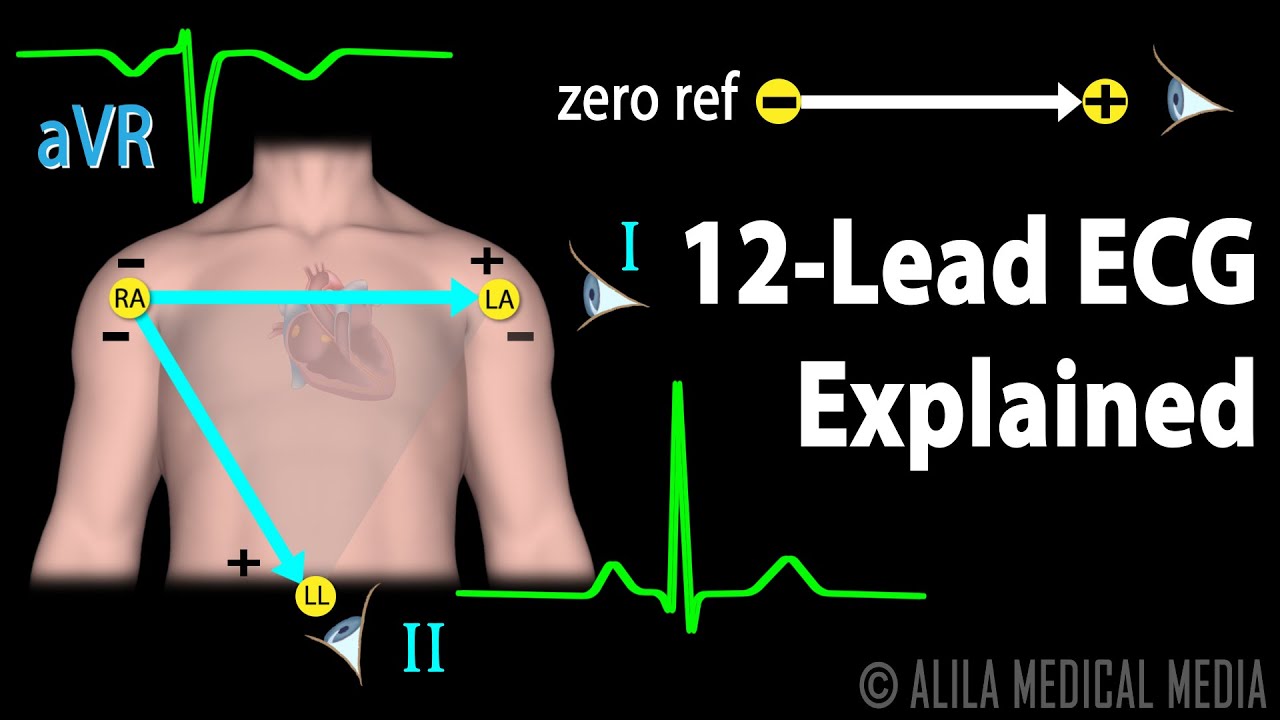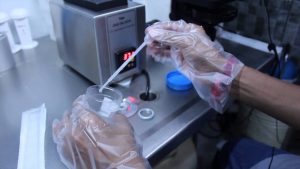(USMLE topics, cardiology) Understanding the standard 12-lead EKG – Basics of electrocardiography explained. This video is available for instant download licensing here: https://www.alilamedicalmedia.com/-/galleries/narrated-videos-by-topics/ekgecg/-/medias/4d57ce72-0d39-4525-b523-329941b9edcf-12-lead-ecg-explained-narrated-animation ©Alila Medical Media. All rights reserved. Voice by: Sue Stern. Support us on Patreon and get FREE downloads and other great rewards: patreon.com/AlilaMedicalMedia All images/videos by Alila Medical Media are for information purposes ONLY and are NOT intended to replace professional medical advice, diagnosis or treatment. Always seek the advice of a qualified healthcare provider with any questions you may have regarding a medical condition. Electrical activities of the heart can be picked up on the skin via electrodes. An ECG machine records these activities and displays them graphically. The graphs show the heart’s OVERALL electrical potential, or voltage, as it changes over time during a cardiac cycle. The 12 leads of the ECG represent 12 electrical views of the heart from 12 different angles. The conventional 12-lead procedure involves attaching 10 electrodes to the body: one to each limb and six across the chest. There are 6 limb leads and 6 chest leads. The 6 limb leads look at the heart in a vertical plane and are obtained from three electrodes attached to the right arm, left arm, and left leg. The electrode on the right leg is an earth electrode. The measurement of a voltage requires 2 poles: negative and positive. The ECG machine uses the negative pole as zero reference. Thus, the position of the positive pole is the “point of view”, and the line connecting the 2 poles is the “line of sight”. Leads I, II, and III are BI-polar – they measure electrical potential between 2 of the 3 limb electrodes: Lead I represents the voltage between the right arm – negative pole – and the left arm – positive pole, and thus looks at the heart from the left. Lead II sees signal movements between the right arm – negative – and the left leg –positive – forming the INFERIOR LEFT view. Similarly, lead III measures electrical potential between the left arm – negative – and the left leg –positive, looking at the heart from an INFERIOR RIGHT angle. Leads aVR, aVL, and aVF, or “augmented limb leads”, are UNIpolar. They use ONE limb electrode as the positive pole, and take the average of inputs from the OTHER two as the zero reference. Hence, aVR looks at the UPPER RIGHT side of the heart; aVL looks at the UPPER LEFT side of the heart; and aVF looks at the INFERIOR wall of the heart. The chest leads, or precordial leads, view the heart in a HORIZONTAL plane. These are unipolar leads. The corresponding chest electrodes serve as the positive poles. The reference negative value is the same for all chest leads and is calculated as the average of inputs from the three limb electrodes. DE-polarization TOWARD a lead produces a POSITIVE deflection; DE-polarization AWAY from a lead gives a NEGATIVE deflection. The REVERSE is true for RE-polarization. Thus, leads that look at the heart from different angles may have waves pointing in different directions.

12 Lead ECG Explained, Animation
- Post author:
- Post published:June 5, 2021
- Post category:Uncategorized
- Post comments:0 Comments
You Might Also Like

Testosterone Production

What Causes Insulin Resistance?

The Right Way To Squat | Squat Exercise | Fitness Video | How to Squat? I OZiva

The scientific truth about steroids

What is Normal Body Temperature? What is a Fever?

Is Creatine Safe? | Creatine for Muscle and Brain Performance- Thomas DeLauer

BMI Calculation

Human Body, Body Building Muscle Building Anatomy Physiology Video – 17

3D Model Human anatomy Animated skeleton internal organs at 3DExport.com

Modified Tricep Dips Demo

Testosterone & Androgenic Effects Video – 50

Anatomy and Physiology of Respiratory System

Glutamine – Matryoshka

Semen Analysis

Health and Exercise Tips – Back Extensions

One Hand Triceps Extension-12

How to do Machine Flat Bench Press – Chest press workout

Laproscopic Surgeries Video – 1

Pulmonology Video – 3

Tenormin is a Prescription Medication Used to Treat High Blood Pressure and Other Conditions

TREAT FEVER WITHOUT MEDICINES | TREAT FEVER INSTANTLY

What is the BEST WORKOUT FOR TEENS

D.1 Methods of drug administration (SL)

16 FOODS TO EAT ON A KETOGENIC DIET — Ketogenic Diet Foods.
![Read more about the article [Megurine Luka] Glucagon [EZFG]](https://videos.drmaheshkumar.com/wp-content/uploads/2021/05/Megurine-Luka-Glucagon-EZFG-300x225.jpg)
[Megurine Luka] Glucagon [EZFG]

Diazepam (Valium): What You Need To Know
Special Population

DIGESTION AND ABSORPTION

Sugar Free, Low Sugar Video – 8

The Post-Workout Anabolic Window (MYTH BUSTED with Science)

BCAA Supplements – What Are BCAA’s And How Do They Work? | GuruMann Review

Sugar Free, Low Sugar Video – 2

Fitness Component of Flexibility

Male Sex Hormones

Resistance Band Exercise: Seated Row

9 Months In The Womb: A Remarkable Look At Fetal Development Through Ultrasound By PregnancyChat.com

The Normal ECG Beat – EMTprep.com

Fitness : How to Calculate BMR (Basal Metabolic Rate)

Geriatric Physiotherapy Video – 15

Vomiting and Diarrhea

Cellular structure of bone | Muscular-skeletal system physiology | NCLEX-RN | Khan Academy

